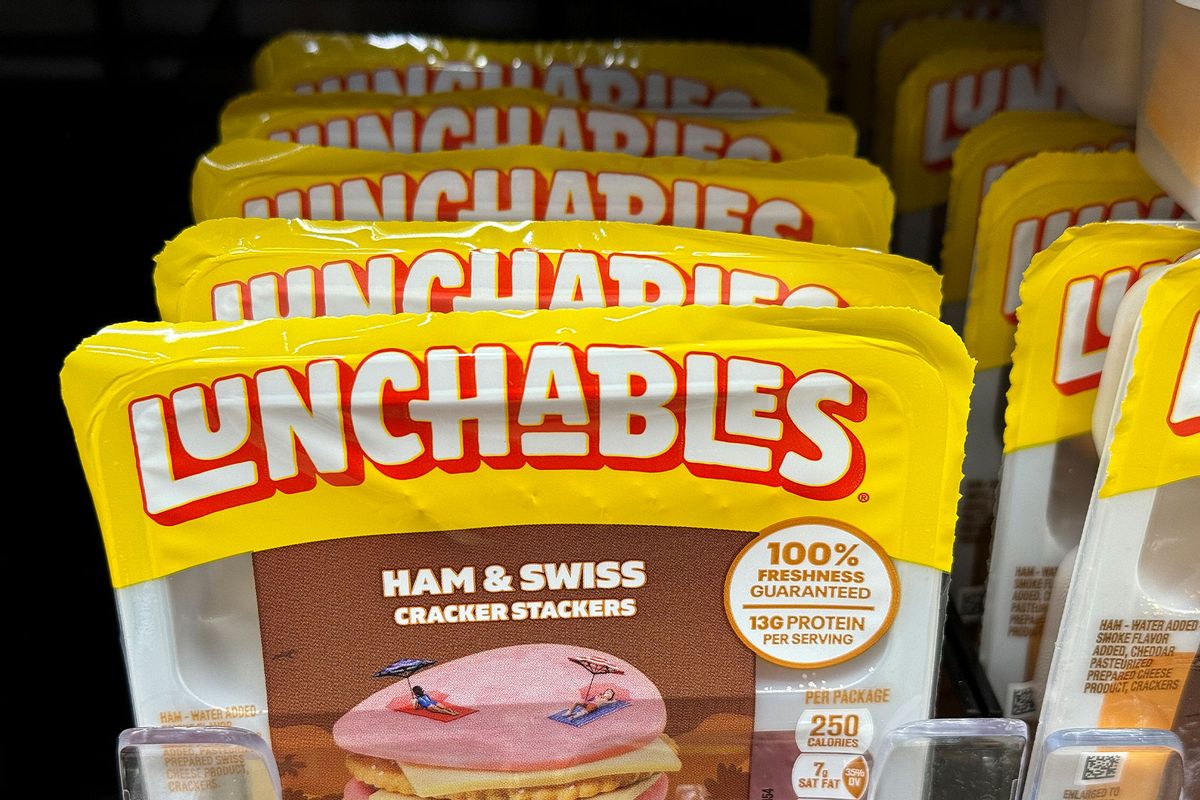A consumer watchdog group is urging schools to remove Lunchables and similar lunch kits from school menus because they contain high levels of sodium and high levels of chemicals found in plastic.
The US Department of Agriculture currently permits two Lunchable kits, Turkey & Cheddar Cracker Stackers and Extra Cheesy Pizza, to be served to nearly 30 million children through the National School Lunch Program. In accordance with the program’s requirements, Kraft Heinz — the manufacturer of Lunchables — amped up the nutritional profile of its school Lunchable kits, adding more whole grains to the crackers and overall protein. But according to a Tuesday report from Consumer Reports, the Lunchable kits served in school have even higher levels of sodium than the kits available for purchase in stores nationwide.
Consumer Reports compared the nutritional profiles of two school Lunchable kits, ultimately declaring the food kits are an unhealthy meal option for children.
“Lunchables are not a healthy option for kids and shouldn’t be allowed on the menu as part of the National School Lunch Program,” said Brian Ronholm, director of food policy at Consumer Reports. “The Lunchables and similar lunch kits we tested contain concerning levels of sodium and harmful chemicals that can lead to serious health problems over time.
“The USDA should remove Lunchables from the National School Lunch Program and ensure that kids in schools have healthier options.”
Consumer Reports also tested 12 store-bought versions of Lunchables and similar lunch and snack kits from Armour LunchMakers, Good & Gather, Greenfield Natural Meat Co., and Oscar Mayer. They found that the kits contained “relatively high levels” of lead, cadmium and sodium. The sodium levels in the lunch and snack kit labels reportedly ranged from 460 to 740 milligrams per kit — nearly a quarter to half of a child’s daily recommended limit. The school version of the Turkey and Cheddar Lunchable contained 930 milligrams of sodium compared to 740 milligrams in the store-bought version. Additionally, the school version of the cheesy pizza Lunchable contained 700 milligrams of sodium compared to 510 milligrams in the store version.
All but one of the aforementioned kits (Lunchables Extra Cheesy Pizza) tested positive for phthalates, known endocrine disruptors found in plastic that have been linked to several health issues, including diabetes, reproductive problems and certain cancers. The National Institute of Health categorized phthalates as “detrimental to human health.”
Want more great food writing and recipes? Subscribe to Salon Food's newsletter, The Bite.
None of the tested kits exceeded the federal limit of lead and cadmium levels, but five of the twelve kits would expose someone to 50% or more of California’s maximum allowable dose level (MADL). Even in small amounts, such heavy metals can cause developmental problems in children, along with hypertension, kidney damage, and other health problems in adults. The risks associated with heavy metals worsen from regular, prolonged exposure over time.
Consumer Reports has launched a petition to the USDA, urging the agency to remove Lunchables from the National School Lunch Program. The petition is seeking 25,000 total signatures, At this time, it has received over 15,000 signatures in support of the initiative.
According to the School Nutrition Association, over 95,000 schools and institutions serve school lunches to 28.5 million students each day through the federal National School Lunch Program. Nearly 5 billion lunches are served annually: 18.9 million of those lunches are free, 1.1 million of those lunches are reduced price and 8.5 million lunches are full price.

Shares